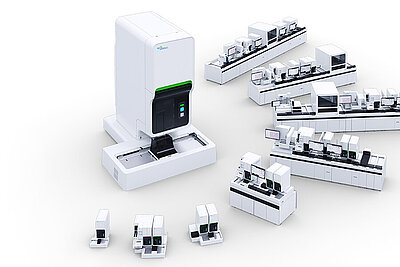Zakresy referencyjne
Po pierwsze, osobny, pojedynczy wynik nie dostarcza wielu informacji. Wnioski można wyciągnąć jedynie na podstawie porównania wyniku z inną wartością. Porównanie wyniku pacjenta z jego
poprzednimi wynikami pokazuje, czy wartość jest stała, wzrasta, czy też maleje. Odniesienie do wyników zdrowych osób pozwala określić, czy wartość jest w zakresie charakterystycznym dla zdrowej
populacji czy nie. Natomiast porównanie z decyzyjnymi wartościami granicznymi informuje, czy wskazane jest wykonanie innych badań.
Zakres wartości typowych dla zdrowych osób nazywany jest „zakresem referencyjnym”. Zwykle luźno odnosi się on do „zakresu wartości prawidłowych”, lecz czym jest „wartość prawidłowa”?
Na wartości laboratoryjne wpływa wiele różnych czynników, od płci i wieku po zwyczaje żywieniowe. Gdy mówimy o „zakresach referencyjnych” bardzo ważne jest, aby wiedzieć do czego się one
odnoszą. Czy punkt odniesienia jest odpowiedni? Tylko w takim przypadku zakres referencyjny może być zastosowany dla danego pacjenta.
Opublikowane zakresy referencyjne dla analizatorów Sysmex
First author | Citation | Analyser | Parameters | Population |
| Mrosewski I et al. | Clin Chem Lab Med | XN-9000 | CBC | German, paediatric |
| van Pelt JL et al | Clin Chem Lab Med | XN-Series | CBC+DIFF+RET+PLT-F | Dutch |
| Int J Lab Hematol | XN-Series | CBC+DIFF+RET | Belgium, adult | |
| Wilson S et al. | Int J Lab Hematol | XN-3000 | CBC+DIFF | Canadian, paediatric |
| Int J Lab Hematol | XN-3000 | CBC+DIFF | Canadian, paediatric | |
| Arch Pathol Lab Med | XN-1000 | CBC+DIFF+RET+PLT-F | US American, newborns | |
| Arbiol-Roca A et al. | EJIFCC | XN-Series | CBC+DIFF+RET | Spanish |
Validation of reference ranges
Adopting a published reference range without validation is not permissible and can even be dangerous for patients. Its suitability as a reference must be examined in every case. To do this, the International Federation of Clinical Chemistry (IFCC) suggests the following procedure [1]:
Twenty local reference samples are taken and compared with the reference range published elsewhere. If not more than two of the 20 samples are outside this range, it may be used. If three to four samples are outside the reference range, a further 20 new samples must be taken and measured. If not more than two of these 20 samples are outside the range, it may be used. If in the initial verification five or more samples or more than two of a repeated set of samples are outside the published range, it is not suitable for use as a reference for local patients. A new survey or the validation of another, different reference range would be the next options.
[1] Solberg HE et al. (2004): The IFCC recommendation on estimation of reference intervals. The RefVal program. Clin Chem Lab Med 42: 710–714.
A new indirect approach of determining reference ranges
The International Federation of Clinical Chemistry (IFCC) Committee on Reference Intervals and Decision Limits (C-RIDL) recently published an opinion paper about ‘indirect’ methods for reference interval determination [2]. The ‘indirect’ approach to determine reference intervals refers to a statistical analysis of already existing results from specimens which were collected for routine purposes (for example, samples collected for screening, diagnostic or monitoring purposes). This novel approach is not only a useful adjunct to the use of traditional direct methods, but also has a number of advantages such as basing the outcomes on the analytical and pre-analytical procedures in use, the ability to address a wide range of populations, especially the population served by the laboratory, and, importantly, the relative ease of use and far lower costs. In this opinion paper, the IFCC C-RIDL encourages laboratories ‘to use indirect methods to evaluate their reference intervals in use, to estimate new reference intervals and to publish and share their results in appropriate detail and also to continue the search for new and improved techniques for the process’.
[2] Jones GRD et al. (2018): Indirect methods for reference interval determination – review and recommendations. CCLM, 57 (1), 20-29 Free online: https://pubmed.ncbi.nlm.nih.gov/29672266/



